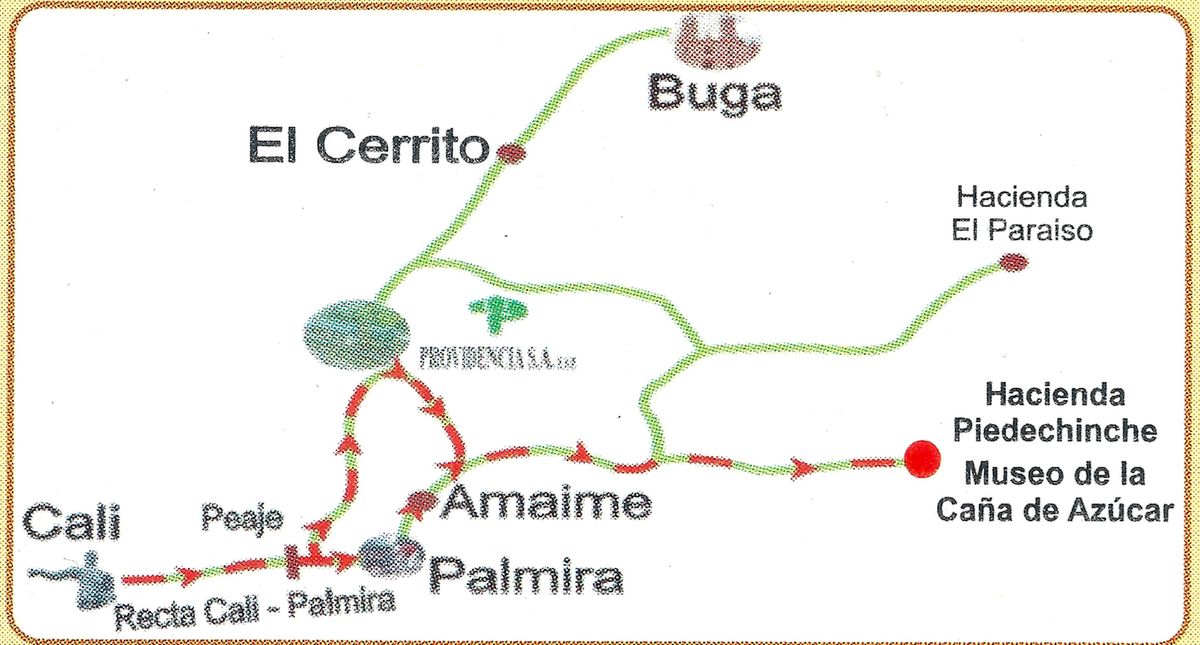About
What is now a sugar-cane museum once belonged to a Spanish family who staked the land and built a hacienda here back in 1715 using adobe and cow's blood to hold it all together.
The home itself is in the shape of a cross - a tribute to the family's devout Catholicism. There's also a man-made body of water surrounding the hacienda designed to keep animals from coming inside - a moat, of sorts, though it's more of a stream, really. There's a sewing room and a library, with the doorway into the sewing room being much smaller, since only women were allowed inside, of course (and it goes without saying that the ladies weren't permitted into the library, either).
While the hacienda is certainly worth a look, it pales in comparison to the lush grounds surrounding the modest house that once slept the early Colombian settlers, an industrialist family with 16 children. All throughout the large compound, there are authentic mechanisms for processing sugar cane, chronicling the evolution of the sugar-manufacturing process throughout the years. But it's the vibrant, verdant gardens full of rare trees, lily ponds, colorful flowers, and other amazing forms of flora that's really the sweetest part of this gorgeous place.
Related Tags
Colombia Discovery: Coffee, Art & Music
Explore Colombia's depth: art, history, culture & transformation.
Book NowCommunity Contributors
Added By
Published
August 13, 2013

















































